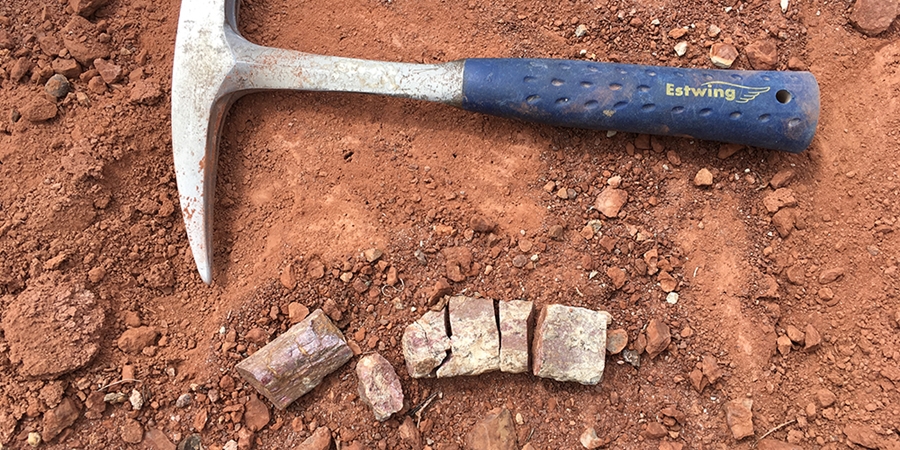
Things were different in North America 90 million years ago. It was the Late Cretaceous and the Western Interior Seaway split what is now North America from Alaska to the Gulf of Mexico. (Modern day Arkansas, on the ancient sea's eastern shore, wasn't quite waterfront property, but it was close.) A chain of mountains rose from what's now Nevada through Montana, causing regional climate variations and a physical barrier to animal movement. The climate was warmer and richer in carbon dioxide due to abundant volcanic activity. Insects pollinated flowering plants, which were relatively new on earth at the time. Dinosaurs were still abundant, and there were plenty of mammals around too.
While much is known about the Late Cretaceous, 90 million years ago and later, there's a gap in the earlier record that University of Arkansas scientists are attempting to fill.
"This gap between 120 million years ago and 98 million years ago is not well studied," said Celina Suarez, associate professor of geosciences. "That's partly because it's poorly dated. There are not a lot of rocks from the period."
Suarez and Glenn Sharman, assistant professor of geosciences, recently received a five-year, $588,000 grant from the National Science Foundation to add to what scientists know about the transition period from the Early to Late Cretaceous, about 120 million to 90 million years ago. By collecting and analyzing rocks and fossils from what was once the western shore of that great inland sea, they will help determine how rapidly changing landforms influenced the evolution, distribution and extinction of species.
Suarez will collect and analyze fossils, and Sharman will analyze rocks. He will use the Trace Element and Radiographic Isotope laboratory to date the mineral zircon and the Stable Isotope Laboratory to do stable carbon isotope analysis, which will chart changes in the carbon isotope record, which in turn will show how much carbon dioxide was in the atmosphere at the time.
The research will help establish a baseline data for scientists interested in paleoclimate research, and for those investigating long-term trends in climate change, Suarez said. The Cretaceous Period is so named because of the appearance of microscopic organisms that took up carbon dioxide and created calcium carbonate deposits that became chalk beds.
"There was a lot of carbon dioxide pumped into the atmosphere from volcanoes, but the earth was able to keep up, to a certain degree, due to the evolution of these organisms," she said.
The Cretaceous is an important time period to study because it was a time of higher atmospheric carbon dioxide and global average temperatures. These conditions are predicted for the future of the planet for roughly the next 300 years, if carbon dioxide emissions from anthropogenic sources are not cut significantly, so it is important to understand how the planet functioned as a system under these conditions.
Topics
Contacts
Celina A. Suarez, associate professor
Department of Geosciences
479-575-4866, casuarez@uark.edu
Bob Whitby, feature writer
University Relations
479-575-4737, whitby@uark.edu